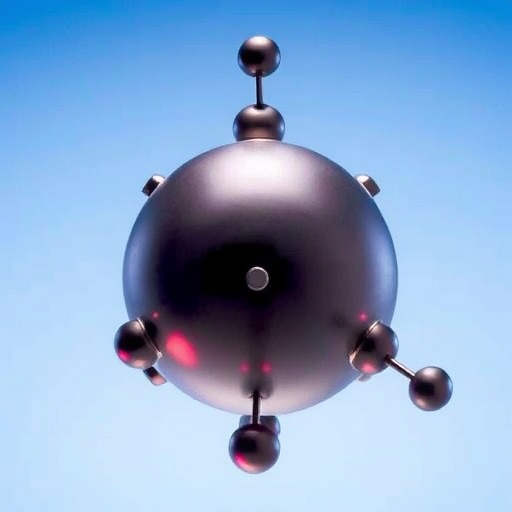A groundbreaking advancement in the realm of synthetic chemistry has emerged from the research labs of ShanghaiTech University, where De-Wei Gao and his team have pioneered an innovative method for the selective transformation of boron-heteroatom functional groups via radical chemistry. This novel approach circumvents the classical challenges associated with primary radical instability, enabling unprecedented precision in converting primary carbon-boron bonds into a diverse array of heteroatom-containing functional groups. This breakthrough not only opens new avenues for the modular and efficient synthesis of sugar molecules but also heralds transformative potential for rapid bioactive molecule construction, as detailed in their recent open access publication in CCS Chemistry.
The synthesis of complex molecules, particularly small molecule drugs, often hinges on the presence of multiple heteroatom functional groups. Pinacol boronates (BPins) have surged to the forefront in synthetic strategies due to their robust yet versatile nature, allowing facile insertion of functional groups. Among these, a subclass known as 1,n-diboron compounds have intrigued researchers due to their dual and distinct C–B bonds within a single framework. This duality offers the tantalizing possibility of sequential and site-specific functionalization, substantially reducing synthetic complexities. Yet, the chemically analogous nature of these C–B bonds has long posed a significant obstacle to selective bond transformation, limiting the scope of current methodologies primarily to 1,2- or 1,3-diboron compounds that often necessitate the involvement of ortho-boron groups or cyclic intermediates such as five- and six-membered ring structures.
The conventional reliance on transition metal catalysis or sophisticated organometallic reagents, frequently sensitive to air or moisture, further constrains practical synthetic applications. Moreover, most existing research has largely concentrated on C–B to C–C bond transformations, leaving the arena of selective C–B to C–X (heteroatom or diverse functional group) conversion conspicuously underexplored. Against this backdrop, Gao’s team introduced a carefully engineered free radical chain mechanism initiated by commonplace catechol derivatives, effectively enabling the selective boron-heteroatom exchange reaction with elevated efficiency and regioselectivity across 1,n-diboron substrates.
In their study, the researchers meticulously demonstrated that the reaction proceeds predominantly through the generation of primary alkyl radicals coupled with phenylsulfonyl radicals. Rigorous radical trapping assays affirmed the radical pathway, while control experiments underscored the indispensable role of catechol in jumpstarting the transformation. Key to the mechanism’s success was the identification of a diboron species containing a primary Bcat moiety, termed 1f-Bcat, posited as a critical intermediate. Experimental data suggested a dual activation model where this intermediate independently generates primary radicals to initiate the reaction, while the presence of catechol accelerates this initiation phase by activating 1f-Bcat. Subsequently, the phenylsulfonyl radical selectively targets and activates the pinacol boronate substrate, sustaining the radical chain process.
This mechanistic insight culminated in the proposal of a radical chain mechanism that elegantly rationalizes the selective functionalization observed, charted in comprehensive detail within the original publication’s figures. Such mechanistic clarity enhances the method’s appeal for synthetic exploitation and provides a blueprint for further innovations in boron chemistry.
Beyond mechanistic elucidation, the team explored the synthetic utility of the newly formed products, showcasing a versatile tandem reaction that orchestrated phenylthiolation followed by photocatalytic deborylation in a one-pot procedure. This tandem strategy yielded a bifunctionalized product with two distinctly modified C–B bonds, advancing the field’s capacity for orthogonal functional group installation. Propelled by this success, subsequent transformations targeted the secondary C–B bond for diversification, achieving classic synthetic manipulations such as Zweifel olefination, copper-catalyzed electrophilic coupling, and oxidative conversions, demonstrating broad functional group compatibility.
A further notable achievement was the Mitsunobu azidation of the oxidation product, yielding azide intermediates amenable to “click” chemistry via copper-catalyzed azide-alkyne cycloaddition (CuAAC), and Staudinger reduction-acylation protocols that scaffold Boc-protected secondary amines in a streamlined fashion. These transformations underscore the strategic value of the method in synthesizing complex molecules with tailored functionality, pivotal for drug discovery and biomolecule engineering.
The researchers extended the scope of their method to encompass the synthesis of bioactive molecules, efficiently constructing two distinct classes of therapeutically relevant compounds from readily accessible diboron precursors. The brevity and efficiency of this synthetic route spotlight the method’s relevance for medicinal chemistry, where rapid access to diverse bioactive scaffolds is a paramount objective.
Collectively, this pioneering work introduces a straightforward catechol-initiated boroester exchange methodology that catalyzes a robust free radical chain reaction, enabling selective boron-heteroatom functional group exchange within 1,n-diboron architectures. Its compatibility with complex stereochemical milieus and broad substrate scope position it as an impactful addition to the synthetic chemist’s toolkit, offering promising utility in the late-stage functionalization of molecules, bioactive compound construction, and synthetic method development.
Looking forward, this radical-mediated platform promises to invigorate the design of new therapeutic agents by facilitating facile and customizable molecular modifications. Moreover, its reliance on readily available, air-stable reagents without precious metal catalysts aligns well with sustainability paradigms, marking a strategic advance in green chemistry.
The broader scientific community eagerly anticipates further applications and mechanistic refinements of this transformative approach. The capacity to harness radical intermediates for site-selective functionalization in complex systems may catalyze a renaissance in boron chemistry and drive innovations across synthetic organic chemistry and chemical biology.
The findings reported by De-Wei Gao’s group exemplify the critical synergy between mechanistic insight and synthetic innovation, charting a compelling path forward in the quest to streamline drug discovery pipelines and elevate molecular design capabilities through selective boron-heteroatom chemistry.
Subject of Research: Not applicable
Article Title: Selective Boron-Heteroatom Functional Group Exchange Reactions
News Publication Date: 23-Aug-2025
Web References: https://www.chinesechemsoc.org/journal/ccschem, http://dx.doi.org/10.31635/ccschem.025.202505879
Image Credits: CCS Chemistry
Keywords
Saccharides
Tags: 1advancements in synthetic strategieschallenges in primary radical stabilitydual C-B bonds in functionalizationefficient heteroatom functionalizationinnovative methods in molecular synthesismodular synthesis of sugar moleculesn-diboron compounds in chemistrypinacol boronates in drug synthesisradical chemistry in synthetic chemistryrapid construction of bioactive moleculesselective transformation of boron groupstargeted boron-heteroatom exchange reactions





